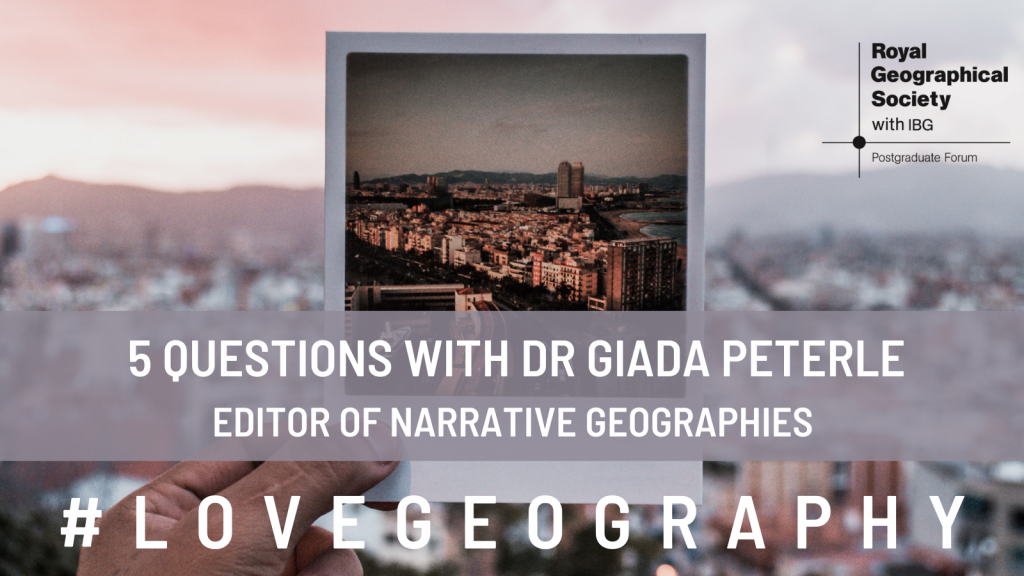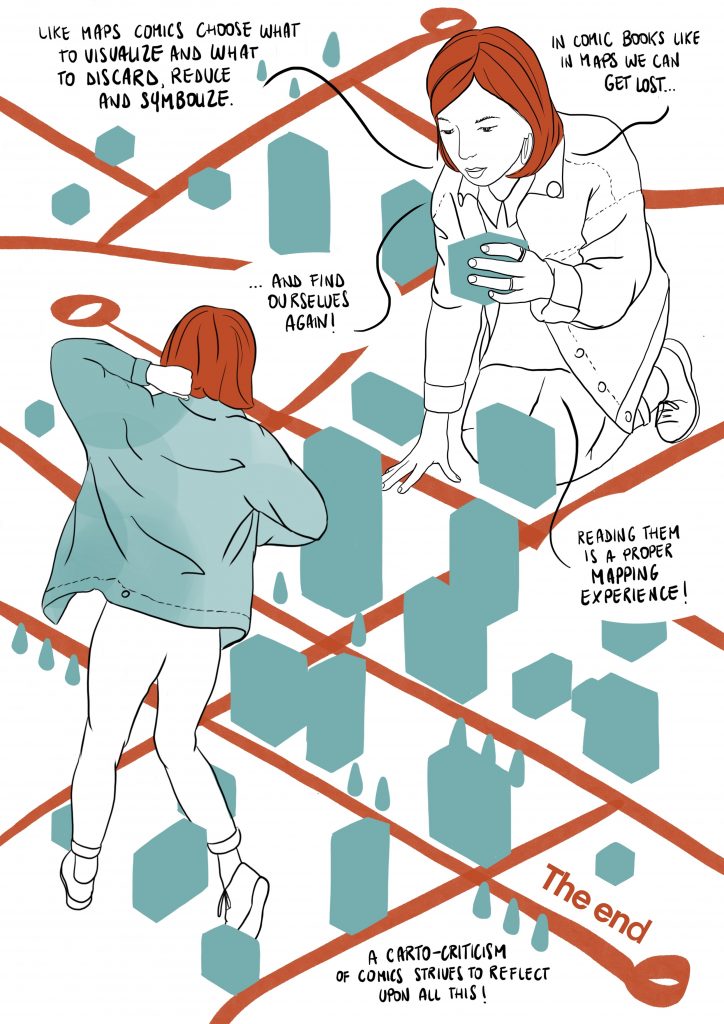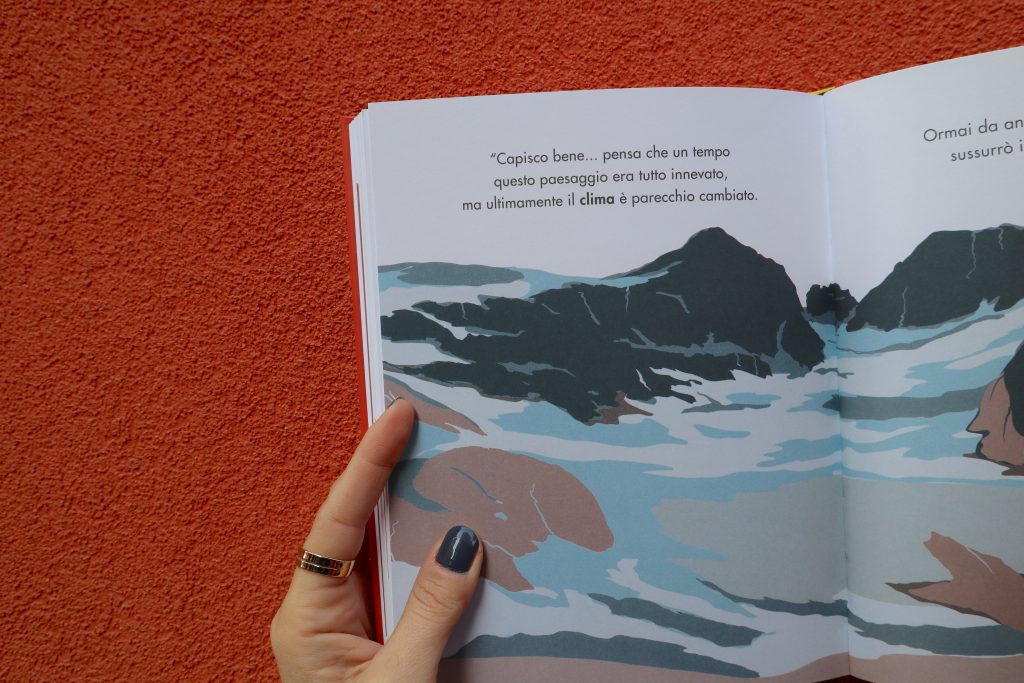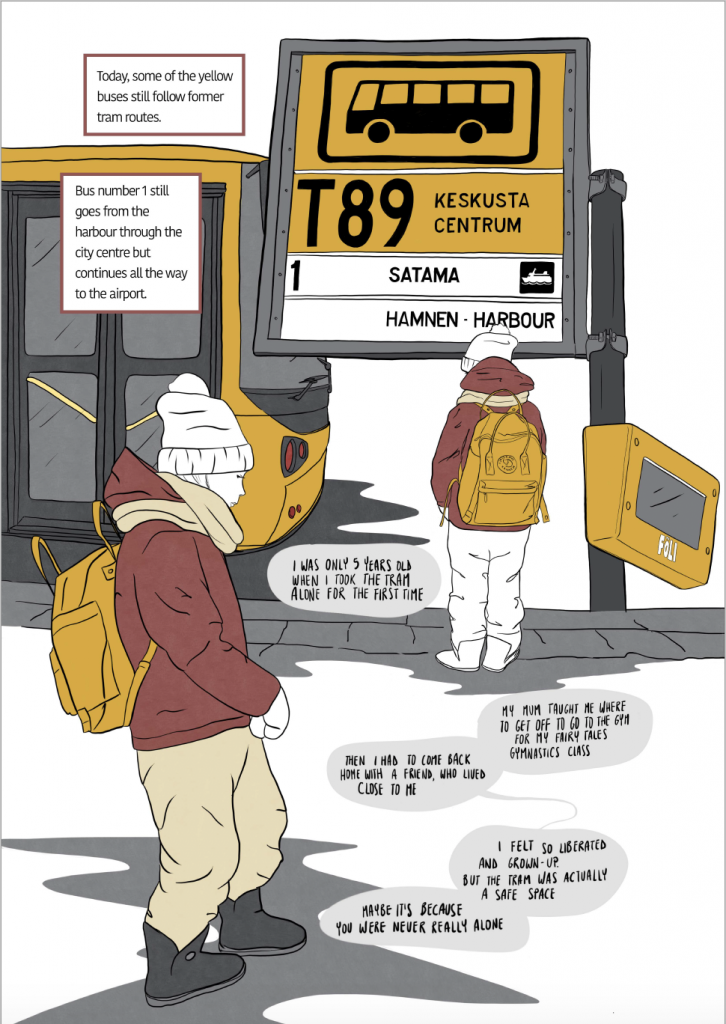
Dr Giada Peterle is a geographer and is currently lecturer in Literary Geography at the University of Padua where she worked on a post-doctoral project entitled ‘Urban Literary Geographies: Mapping the City Through Narrative Interpretation and Creative Practice’. Her research looks at narrative forms such as literature, comics and creative maps to understand how we represent and live in place. As a comics author and illustrator, she experiments with art-based and visual methods inspired by creative research approaches in the geohumanities. Giada is Editor of narrativegeographies.com where she shares and illustrates her research, and of her @narrativegeographies Instagram blog.
Giada inspired our #narrativegeographies event today and so we only saw it fitting to bring you five questions with Giada today. PGF Digital Officer Sidra asked Giada 5 questions.
Giada, thank you for speaking to us during our #lovegeography digital event. The first question I want to ask is can you tell us about your geography journey and how you became interested in researching narrative forms?
Apparently, my geography journey started quite late, since I have a background in Literary Theory and Criticism. Nevertheless, if I look closer to both my theses, my work on the geographies of urban narratives started quite soon. The BA thesis focused on the relationship between montage and urban space in Alfred Döblin’s Berlin Alexanderplatz, yet that was still a literary critical work. It was probably with my MA thesis on the dystopian representation of postmodern cities that I started to increasingly cross the borders between literary criticism and human geography, bringing these two different disciplinary perspectives into conversation thanks to my supervisors Prof. Emanuele Zinato (comparative literature and Italian studies) and Prof. Tania Rossetto (cultural geography).
This preliminary research became the basis for my PhD project at the Department of Historical and Geographic Sciences and the Ancient World of the University of Padua, where my geography journey officially began. Soon, I came to experience the advantages and disadvantages of conducting interdisciplinary research. While, on the one hand, I felt forced to constantly justify my presence and methodologies in the different disciplinary contexts, on the other hand, I experienced a unique sense of intellectual freedom. This sense of liberation was particularly intense when I graduated and started working on my PhD project. Geography opened my mind to new perspectives and, especially, to a methodological openness to which I became accustomed very soon.
I have always been interested in creative languages and practices and, soon, the idea of not simply reading but also ‘Enacting literary geographies’ (namely the title of my PhD thesis) brought me to experiment with creative writing as a tool to engage more thoroughly with my spatial objects of study. At that time, my interest in comics was growing rapidly. I had been collaborating with Italian COMIX festivals, websites, and publishing houses for a while, when I decided to pass on the other side, becoming a comics author myself. During the first year of my PhD in Human Geography, thus, I was also a student at the International Comics School of Padua and what I learned there soon became part of my research practice. As you can see, in my journey geography, literature, and comics have always been entangled.
In a few words, can you tell us what narrative geographies is?
To me narrative geographies represent both an object of study and a peculiar attunement towards the narrative essence of places, interpreted as stratified layers of spatial stories that crossed and overlapped in the same location over time. I search for narrative geographies when I read books, leaf through comics’ pages, watch movies, and even TV series. I ask myself the way in which spaces are imagined and shaped in the narration, trying to understand what unpredicted spatial meanings emerge from these representations.
I search for narrative geographies even when I’m moving outside the space of the page, in the so-called ‘material world’, where I explore urban landscapes as palimpsests of stories and try to listen to the many voices that are telling them. Inspired by the creative and art-based approaches in the geohumanities, I understand narrative geographies as an opportunity to engage with narratives as research practices, rather than mere objects of analysis. This is also the meaning of the claim ‘Telling stories, drawing spaces’ on my website: to me the practice of telling stories is an active tool to intervene in real spaces, producing new meanings and stimulating spatial action.
Your Narrative Geographies site and Instagram (which functions as your blog) are full of wonderful rich illustrations that convey these ideas and are just as much a part of your research as the written word is. You have a PhD in Human Geography, MA in Literary Theory and Criticism and a BA in Literature – how did you develop your artistic and graphic design skills? How did you build your online presence and create a visually engaging output for your research? And what advice would you give to PhD students thinking about building a blog related to their research?
This is a complicated series of questions, which probably helps me to think retrospectively and in a more conscious way to what I did, almost spontaneously. I’m not an expert of social networks, I’ve never been on Facebook with a personal profile. Yet, inspired by comics’ combination of images and texts, as soon as I started working with verbo-visual methods as a research practice, I saw the great potentialities of Instagram as a hybrid storytelling device. I’ve always enjoyed drawing and illustrating since I was a child, but I started to work more intensively on my visual skills when I engaged with narrative geographical research projects. It was very spontaneous and, as you can see, my graphic works are not sustained by proper artistic techniques. I simply love to cross visual and textual materials in my narration, experimenting with the montage of words, drawings and photographs in my geographical narrative.
So, I opened my Instagram profile @narrativegeographies imagining it as the lively, dynamic part of my more static website wwww.narrativegeographies.com. On the one hand, I was in search for a flexible narrative tool where I could combine images and texts, and on the other hand, I thought of my Instagram profile as a shared notebook, a travel journal where I could trace my narrative geographical explorations in a less structured way. As I said, ‘narrative geographies’ are not just an object of study to me, but a way of seeing and narrating spaces, and I wanted to share my ongoing narrative practice in a more spontaneous way. On Instagram, I share some parts of my geographical research that don’t fit properly in more traditional academic publications.
If I was asked to give advice to PhD students interested in creating a blog, a social network profile, or even a website related to their research, I would suggest to start by choosing the right communication channel. This year, for the first time I’m teaching a course in Creative Communication and Landscape Storytelling, and the most important thing to me is to bring my students to ask themselves the right questions before starting a project – be it a blog, a website, or whatever. What is the core message of my narrative project? What is the expected audience and how can I reach, even engage these people? What is the channel that better suits to my scope? Will this online page valorise otherwise hidden parts of my research? Designing an online space connected to our research, producing engaging content and keeping it updated requires further time and effort. Before starting a blog, then, ask yourself whether you have enough time to take care of what will become an additional research activity, and if it brings something necessary to your initial research project.
Can you share some of your favourite pieces of research that you have worked on?
It’s not an easy choice, because many of these pieces of creative and art-based research are linked to amazing people, unforgettable experiences, and places that contributed to their realisation. For example, I could mention Quartieri. Viaggio al centro delle periferie italiane [Nieghbourhoods: Travel at the Centre of Italian] (BeccoGiallo 2019), a comic book anthology I curated with Adriano Cancellieri, an urban sociologist at the IUAV University. Started from an ambitious idea Adriano and I discussed while having some drinks, it became a collective endeavour aimed at turning urban academic research into a series of comics stories. Drawing myself the research conducted with Adriano in the Arcella neighbourhood in Padua, I had the incredible opportunity to play with the narrative potential of maps through letting a map become a non-human narrator. Probably the work already done on ‘carto-fiction’ as a hybrid fictional genre to narrativize mapping practices and published in Social and Cultural Geography and the CartoGraphic essay written for Living Maps Review helped me a lot!

Last year, I published my first children’s book aimed at explaining geography to children – namely the meaning of the Italian title La geografia spiegata ai bambini (BeccoGiallo 2020). Writing the story and illustrating the ‘geographical adventures’ of Alex, the young girl who is the protagonist of the story, I tried to become myself a kid exploring geography with a fresh curiosity and a lot of imagination.

At the moment I’m focusing all my energies on the printed edition of an original geoGraphic novel I realised last year thanks to a post-doctoral fellowship with the international project PUTSPACE – Public Transport as Public Space in European Cities: Narrating, Experiencing, Contesting. It’s a comics book titled Lines. Moving with Stories of Public Transport in Turku (you can read it https://putspace.eu/lines-moving-with-stories-of-public-transport-in-turku/) where I explored urban mobilities through a diachronic and polyphonic perspective. Many of these works are presented in the forthcoming book Comics as a Research Practice: Drawing Narrative Geographies Beyond the Frame which will be published by Routledge in May 2021.

Last question – coming back to #lovegeography – what do you love about geography?
Coming from an education in Literary Studies, I’ve found in Geography a disciplinary field in which I could bring my creative practice and research interests together, experimenting with art-based, auto-ethnographic, ethnofictional, and narrative methods. This methodological richness together with geography’s capacity to interpret real urban spaces through a complex lens made of disparate interpretative tools that include but are not limited to texts led me to start a PhD in cultural geography. Even though literature still represents a fundamental reference to organise both my teaching and research activities, I love when I ask my students to turn literary figures, like the one of the urban flâneur, into narrative guides that suggest experiences and practices that intervene in material spaces. I love geography’s sincere curiosity and openness towards methodological innovation, because it provides me with the opportunity – or the challenge! – to go on exploring new practices, methods, languages, and collaborations.
Thank you for joining us today Giada. You can follow Giada on Instagram @narrativegeographies, Twitter @giadapeterle and on her site narrativegeographies.com
Join PGF back on Twitter and Instagram @pgf_rgsibg to share your favourite geography narratives using #narrativegeographies#lovegeography